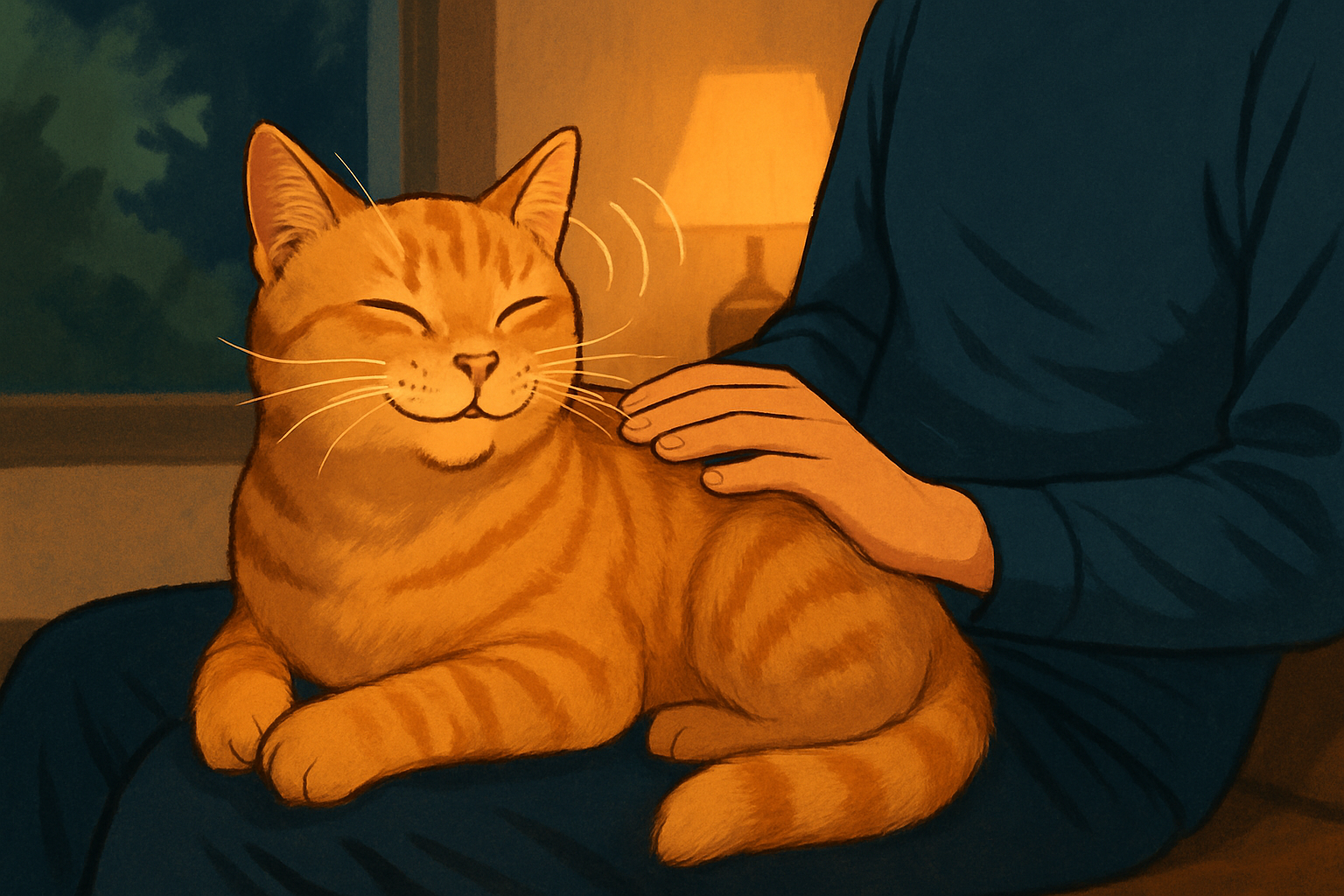If you’ve ever had a cat curl up on your lap and start purring, you know how calming it can be. But have you ever wondered why cats purr?
Most people think cats only purr when they’re happy. That’s partly true — cats do often purr when they’re relaxed, comfortable, and content. It’s their way of saying, “I feel safe here.” But purring isn’t always about joy.
Cats also purr when they’re scared, hurt, or even when they’re dying. This might sound strange, but scientists believe purring may help cats heal. The vibrations made by a purr happen at a special frequency — around 25 to 150 Hertz — which is known to help with bone healing and pain relief. Some researchers think that cats purr to soothe themselves, kind of like how people hum or rock when they’re stressed.
Mother cats also purr to communicate with their kittens. Newborn kittens are blind and deaf, so they feel the vibration of their mother’s purring. This helps them find her and feel comforted. Kittens start purring back after just a few days of life.
Interestingly, not all cats purr the same way. Some are very loud, while others purr so softly you can barely hear it. And did you know that big cats like lions and tigers don’t purr the same way house cats do? Most big cats can make a sound that’s similar to a purr, but they can’t do it continuously while breathing in and out like smaller cats can.

Some experts even believe that cats have learned to use purring to communicate with humans. For example, some cats make a special kind of purr when they’re hungry — it sounds more urgent and is often mixed with a high-pitched cry. It works too — humans are more likely to respond to this “soliciting purr.”
So next time your cat is purring, listen closely. It might be more than just a happy noise. It could be their way of bonding, healing, or even asking for something.
Purring is just one of the many ways cats stay mysterious and fascinating. Whether it’s a sign of happiness or a built-in healing tool, it’s part of what makes cats so special.